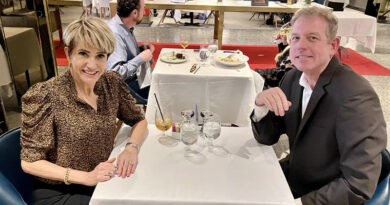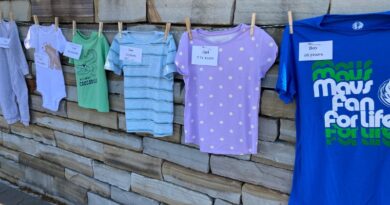Carrell Family Doctors Loved Pediatrics

W.B. Carrell began to think about becoming an orthopedic surgeon while serving on the battlefield during the first World War. With the introduction of modern warfare and weapons of mass destruction came an onslaught of previously unseen afflictions.
“The injuries that he observed inspired him,” said Carrell’s granddaughter, Helen Mann. “Warfare in World War I was completely different, and he saw all kinds of shattered bones from bullets, dismembered arms and legs, and physical deformities.”
At around the same time, the polio epidemic was becoming more widespread, and Carrell, a kind-hearted physician with an interest in children with orthopedic deformities, wanted to help.
There was just one problem.
In the early 1900s, orthopedics — the branch of medicine that focuses on injuries or disorders of the skeletal system — didn’t exactly exist.
“For a long time, there wasn’t any surgery for scoliosis or skeletal deformities,” said orthopedic surgeon Dan Cooper, a Carrell Clinic partner who happens to be the Dallas Cowboys’ team doctor. “There was a big need.”
In fact, much of the development of modern orthopedics is a direct result of WWI surgeons’ experiences.
Never one to be daunted, Carrell — who was widely considered to be “Dallas’ first orthopedic surgeon” — and partner Percy M. Girard established a clinic on Maple Avenue.
Carrell wanted to do more, however, so when a group of Texas Masons approached him about providing free care for children with polio, he quickly became the driving force behind the campaign.
What is known today as Texas Scottish Rite Hospital for Children was chartered in 1921, with Carrell initially treating patients from near and far in his clinic. But just one year later, the hospital had treated 500 patients with 1,000 more on a waiting list.
With word continuing to spread, a larger facility was imperative, and Texas Scottish Rite Hospital for Crippled Children was built adjacent to Carrell’s original clinic.
“People came from far and wide to get to the clinic,” Cooper said. “It was the first orthopedic surgery group established west of the Mississippi River.”
Carrell, who served as Scottish Rite’s first chief of staff, treated children at the hospital and his clinic until his death in 1944.
“He became partially ill, so he just moved into an apartment above the clinic so that he could still see his patients,” Mann said.
Following in his father’s footsteps, Carrell’s son, Brandon, became Scottish Rite’s second chief of staff. It was truly a family affair, with father and son spending countless hours working side-by-side at both the clinic and the hospital.
“They practiced togeth-er, and, at the time, the physicians at the Carrell Clinic all volunteered at Scottish Rite,” Mann said. “It was a very close association in those days.”
Almost a century after the hospital’s founding, Carrell’s legacy lives on.
“Carrell was a real lead-er in the community,” said J.C. Montgomery Jr., Scottish Rite Hospital’s president emeritus. “He was the only orthopedic surgeon in Dallas, and a real visionary.”
While Montgomery never knew W.B., he said that he imagines that he was like his son, who also continued to serve the hospital in an active role until his death, in 1981.
“Dr. Brandon Carrell was one of the most unassuming men I’ve ever met,” Montgomery said. “He absolutely loved working with kids, and they loved him.”
Mann said her father and grandfather had similar personalities and were both known for their tender, thorough care and devotion to their patients.
“Although my grandfather had his private practice, his main love was treating the orthopedic deformities of the children at Scottish Rite,” Mann said. “I’m very proud that his reputation as a very gentle, compassionate physician has continued for all these years.”








